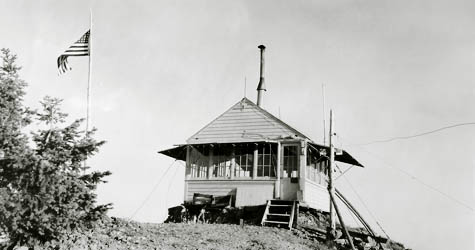 [Image: Courtesy of the U.S. Forest Service].
[Image: Courtesy of the U.S. Forest Service].
Constituting their own architectural typology, and falling perhaps somewhere between Lew Welch and Tom Kundig (someone hire Kundig to design the next Serpentine, please!), are the fire lookout towers of the Pacific Northwest.
Search the photo archives – assembled and maintained by Rex Kamstra, complete with lookout tower trivia – from Oregon and Washington to the hills of South Dakota (or just check out the site’s newsfeed) to explore these often extraordinarily remote structures in all their minimalist – and historically fascinating – glory.
And did you know that you can actually adopt a fire lookout?
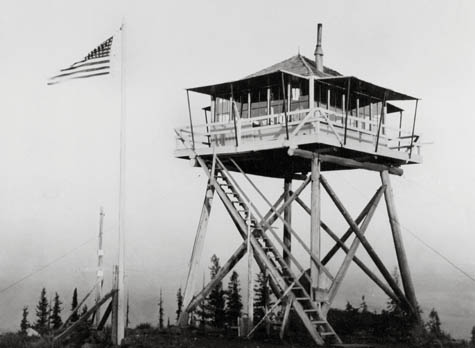 [Image: Courtesy of the U.S. Forest Service].
[Image: Courtesy of the U.S. Forest Service].
While you’re at it, don’t miss the U.S. Forest Service’s own catalog of these overlooked minor building types: fire lookout towers in Sequoia National Forest, for instance, and Umatilla.
The fact that there are any lookout towers still standing at all is, it seems, slightly amazing. “In their heyday during the 1930s,” the Forest Service explains, “there were over 8,000 fire lookouts that dotted mountain tops across the United States with over 600 in California. Today there are only a few hundred in operation. Once considered a proud symbol of our nation’s conservation heritage, fire lookouts are a fading legacy. There are 10 lookouts left on the Sequoia National Forest.”
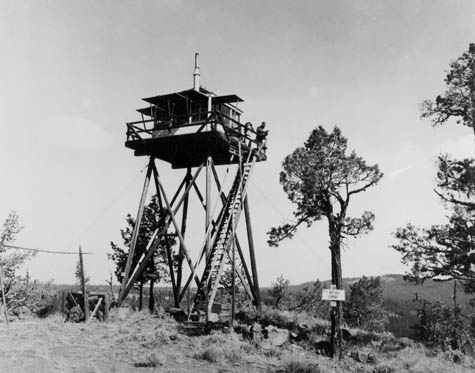
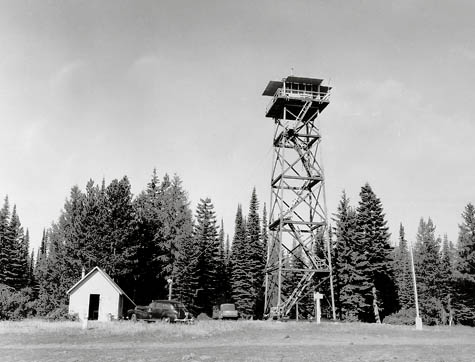 [Image: Courtesy of the U.S. Forest Service].
[Image: Courtesy of the U.S. Forest Service].
A definitive history of these timber structures and lonely cabins has not yet been written (attention Princeton Architectural Press!), although they constitute not only a distinctive family of structures, they also have a regional, ecosystemic importance that only the best pieces of civic infrastructure attain.
They also figure into the national mythology in a way that few other forms of architecture do; from Jack Kerouac disappearing off into the mountains for a summer of fire-spotting, to the poems of Gary Snyder, these awesomely elevated perspectives on the natural world – as well as sites of enforced introspection – deserve their NorCalMod moment. That is, they deserve their architectural rediscovery.
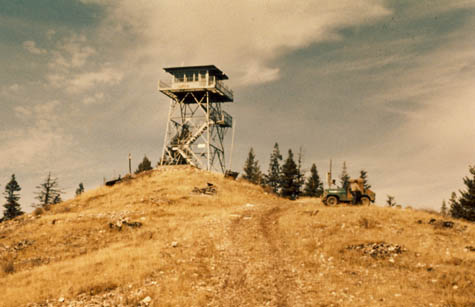 [Image: Courtesy of the U.S. Forest Service].
[Image: Courtesy of the U.S. Forest Service].
Instead of a definitive reference work, there are simply books (albeit still fascinating) like How to Rent a Fire Lookout in the Pacific Northwest: A Guide to Renting Fire Lookouts, Guard Stations, Ranger Cabins, Warming Shelters and Bunkhouses in the National Forests of Oregon and Washington; Adirondack Fire Towers: Their History and Lore; Lookouts: Firewatchers of the Cascades and Olympics; and the so-called “fire lookout research” of David E. Lorenz (now out of print). So people are clearly still interested in these structures. For instance, check out this photo-log of a hike up to the spectacular mountain views of the Mule Peak Lookout.
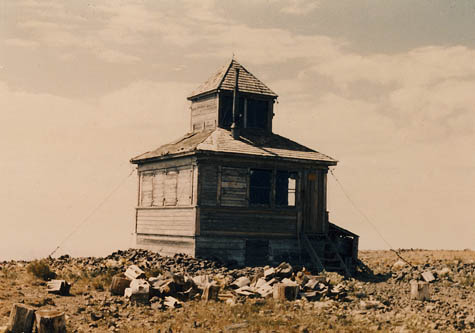 [Image: Courtesy of the U.S. Forest Service].
[Image: Courtesy of the U.S. Forest Service].
Even better, take a long read through the Skagit River Journal‘s look at the fire lookout towers of the Cascades. This latter link includes some amazing material, including references to interviews with former fire watchers and their colleagues:
They told many unusual stories of the watchers, who were prepared to be alone on a mountain ridge in a tower measuring less than 200 square feet. Towers were sometimes built on nearby ridges so that two watchers could combine their observations of a section of forest, which enabled them to triangulate and more accurately call in resources to fight fires. A broad spectrum of watchers developed, from college students to housewives to hermits and those who loved to be surrounded by wilderness and mountains. The authors discovered one watcher who was so frightened during a lightning storm that he ran all the way down the mountain.
There is also the story of Maxine Meyers, a former forest lookout.
More architecturally, the Skagit River Journal also gets into the ways and means of these towers’ construction: “Before mountain roads were built of a size to accomodate trucks, the materials were largely packed in on backs or on mules, and then another team had to slog through the brush, stringing telephone wire before the use of two-way radios.” Thus were distant structures assembled in the woods.
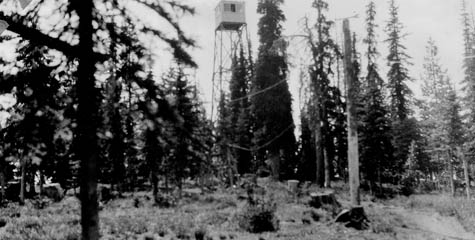 [Image: Courtesy of the U.S. Forest Service].
[Image: Courtesy of the U.S. Forest Service].
Plus, where, now, are the people who actually lived in these structures – stationed there for whole seasons at a time to eat canned peaches and watch the stars, looking out for signs of distant fires? Are they still alive, and, like Maxine Meyers, could you interview them? It’s an architectural form that comes with its own anthropology: narratives of use and inhabitation.
Further, who designed these structures – based on what plan, and from what material inspiration? What would a fire lookout tower, built today, look like? Perhaps like the awesome “Prairie Ladder” by Anderson Anderson?
And how do these towers frame the landscape, and to what extent could you put them into the visual tradition of things like panoramas?
These towers, after all, aren’t just towers; they have a kind of optical functionality, built specifically for the purpose of viewing the landscape in a certain, specific, highly regulated way. They spatially frame this act of disciplined surveillance. In a sense, they are like the British watchtowers so beautifully photographed by Donovan Wylie.
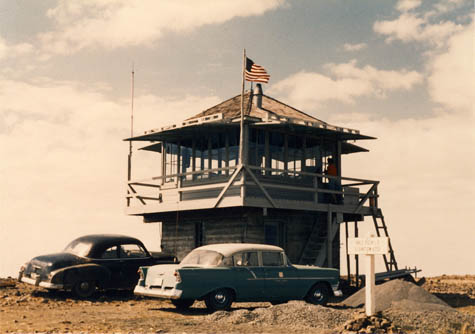 [Image: Courtesy of the U.S. Forest Service].
[Image: Courtesy of the U.S. Forest Service].
But, more to the point, where do fire lookout towers – as a minor design typology – fit into architectural history?
 [Images: Illustrations by Kevin Hand for Popular Science].
[Images: Illustrations by Kevin Hand for Popular Science].
 [Image: Courtesy of the
[Image: Courtesy of the  [Image: Courtesy of the
[Image: Courtesy of the 
 [Image: Courtesy of the
[Image: Courtesy of the  [Image: Courtesy of the
[Image: Courtesy of the  [Image: Courtesy of the
[Image: Courtesy of the  [Image: Courtesy of the
[Image: Courtesy of the  [Image: Courtesy of the
[Image: Courtesy of the